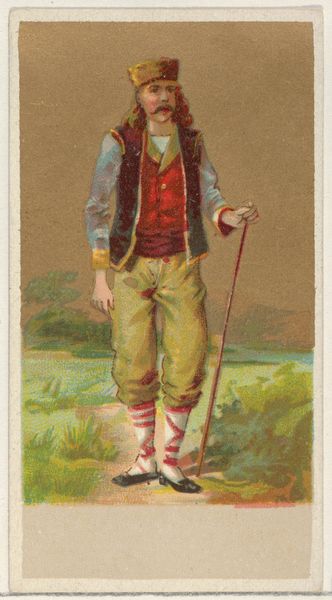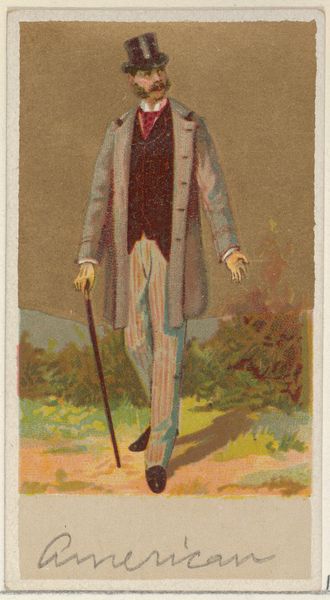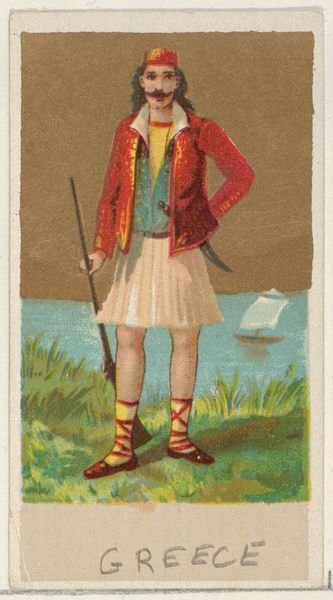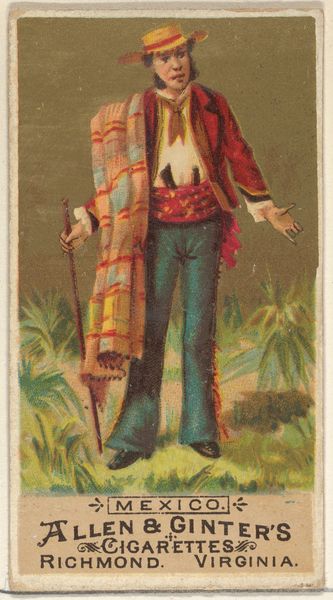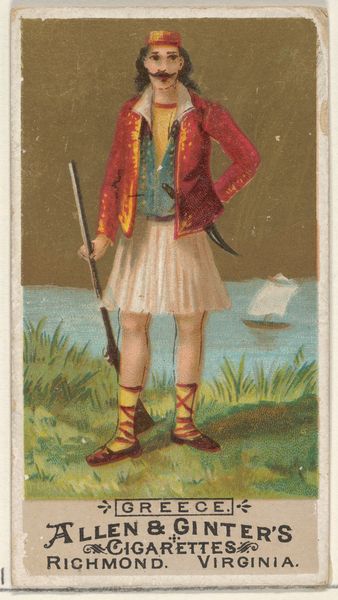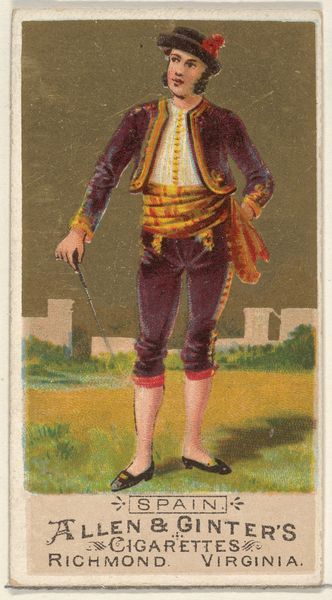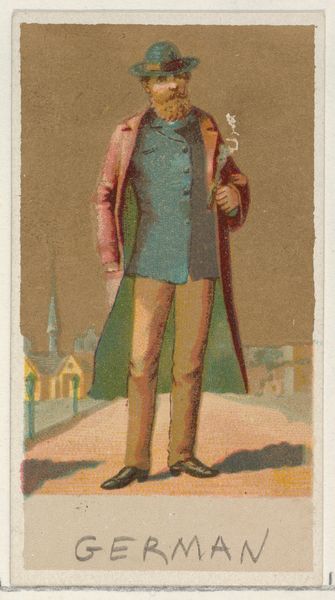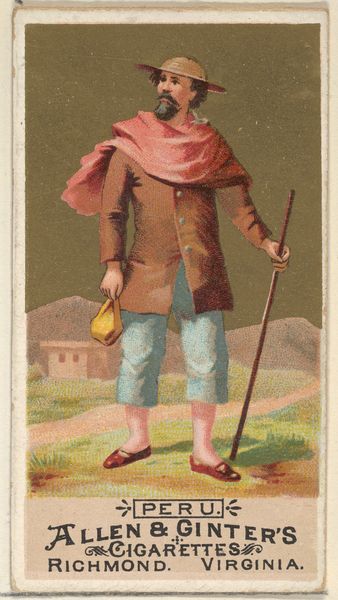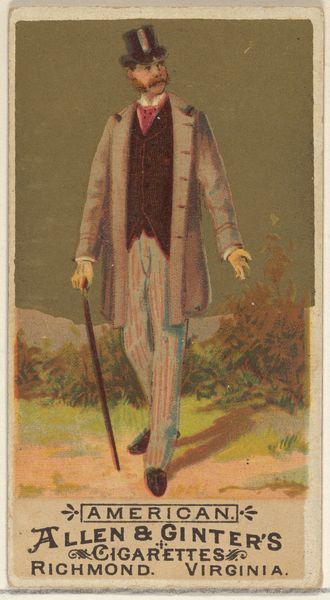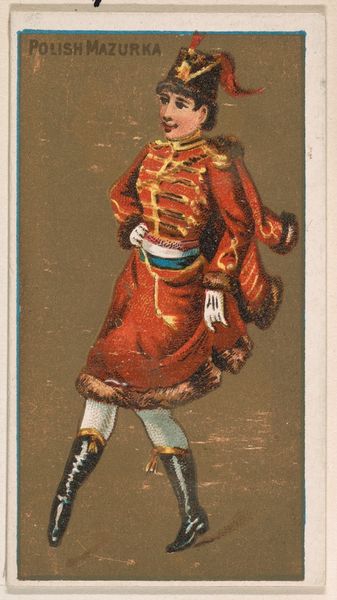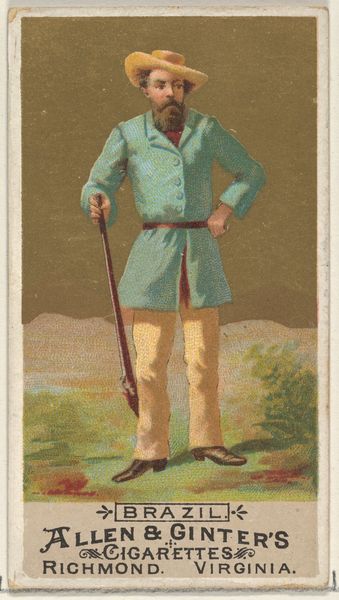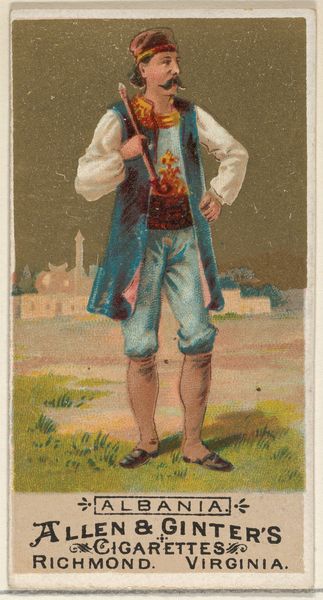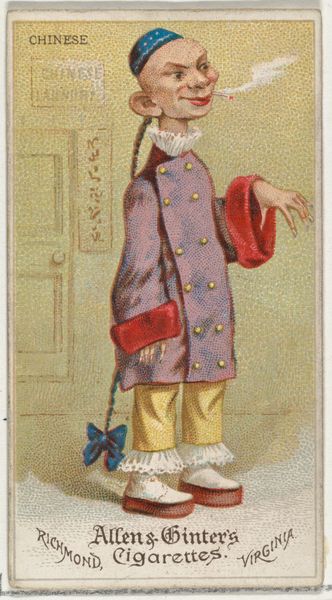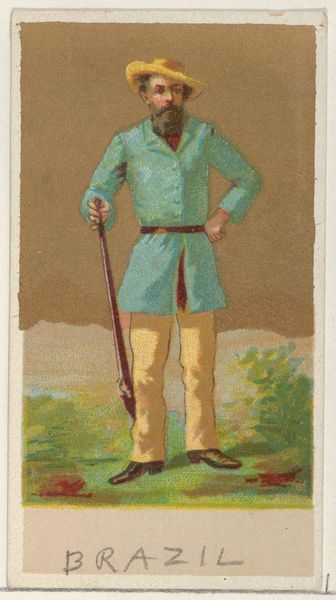
Italy, from the Natives in Costume series (N16) for Allen & Ginter Cigarettes Brands 1886
0:00
0:00
#
portrait
# print
#
figuration
#
coloured pencil
#
19th century
#
men
#
watercolour illustration
Dimensions: Sheet: 2 3/4 x 1 1/2 in. (7 x 3.8 cm)
Copyright: Public Domain
Curator: Well, this striking print, entitled "Italy, from the Natives in Costume series," dates back to 1886. It was created by Allen & Ginter, a cigarette company. What's your first impression? Editor: There's something unsettling about it. It feels almost like a staged photograph, but with these romanticised, idealized colours and costume… It hints at power dynamics I find unsettling. Curator: Interesting. Thinking about production, these were included in cigarette packs. Chromolithography, a complex colour printing process, enabled mass production, fueling the company's branding. It served the capitalist interests of Allen & Ginter. Editor: Exactly. These "natives in costume" are essentially commodified images, circulating to sell tobacco products. Who is the intended consumer, and what is being sold here beyond cigarettes? This idealisation speaks to imperialist fantasies of exoticism and control. I see parallels to similar exploitative marketing campaigns rooted in colonialism. Curator: Good point. You can analyze the fabrics and clothing dyes here. Were these local materials or imported? This informs a material understanding of the production cycle, where resources and labor come from. And it all promotes consumption. Editor: Right, and consider the social and political implications of consuming these images. The presentation, even in its attempt to depict local costumes, essentializes an entire population to a single representation. It strips the depicted person of individual identity. What stories are left untold because of that single illustration? Curator: This image functions as a type of propaganda then, reinforcing societal structures of the time through readily available consumables. Editor: Precisely. Analyzing how this image intersects with broader systems of oppression is crucial. Its presence highlights both an individual portrait and an ongoing legacy of using cultural stereotypes for financial and social gains. Curator: Viewing this through a lens of labor, the production of tobacco, of prints, and the labor of being depicted... everything returns to value extraction, doesn't it? It's sobering. Editor: It makes you question the romantic view of art, revealing uncomfortable truths about its function in perpetuating inequality. Curator: Absolutely, and hopefully offers tools to disrupt those power imbalances in contemporary society.
Comments
No comments
Be the first to comment and join the conversation on the ultimate creative platform.
